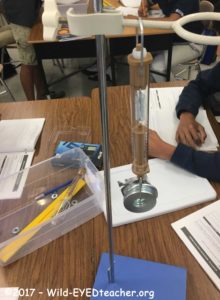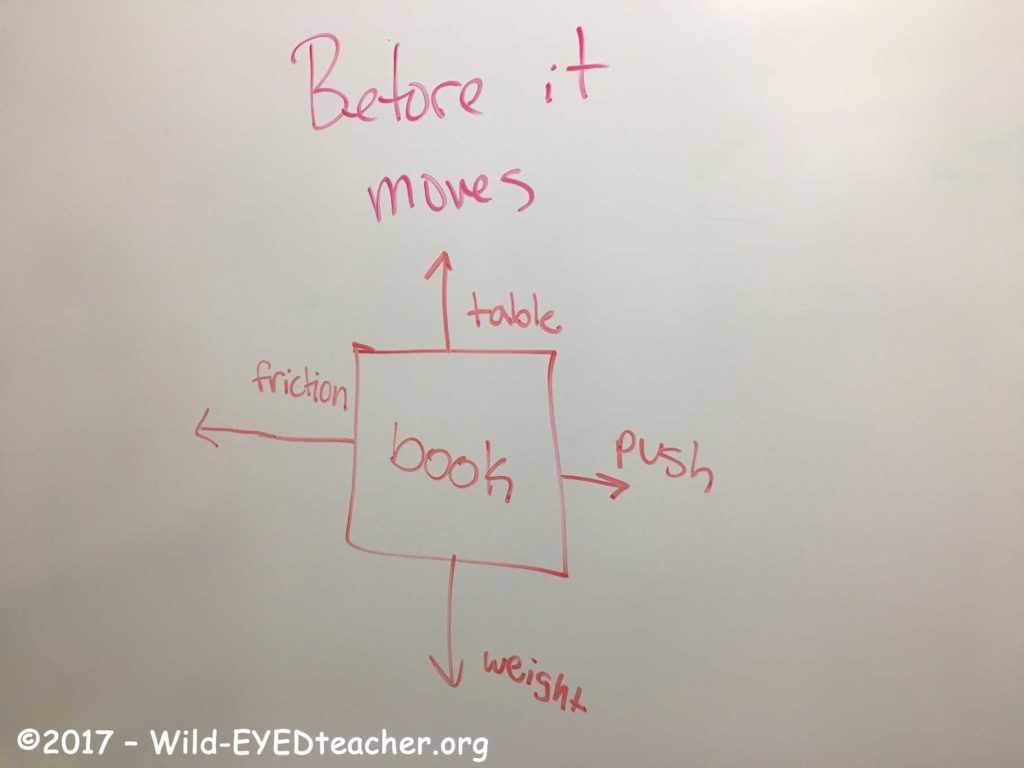First quarter and parent-teacher conferences have come and gone. It’s always good to meet the parents and share how their child is doing in science. One of the most common questions during conferences is about homework and that their child rarely seems to have science homework.
As a result of conversations about homework and how parents can help their child in science, I’ve changed how I will announce homework in science. Each homework assignment will be an assignment on Google Classroom and it will be visible in the calendar of Google Classroom. In fact, all of your student’s homework assignments will appear in the Google Classroom calendar.
I will continue my practice of checking homework for completion. It’s a five-point grade and half credit if it is not completed in time for class. I will also continue to provide five to ten minutes of class to begin the assignment. Most of the homework I assign should take no more than 15 to 20 minutes and the purpose is to prepare for the next day’s class when we will review and correct the assignment. Students are encouraged, and expected, to correct their original work in the science workbooks using a different colored pen or pencil – mark their misconceptions and write the correct answer.
This is the @MerriamWebster definition of ‘misconception’ https://t.co/tzJyOvdLpu
— Mr. Watkins (@ScullenWatkins) October 27, 2017
Lately, I’ve been helping students overcome a couple of misconceptions. The first is the difference between mass and weight.
- Mass is the amount of matter an object has and is measured in grams or kilograms.
- Weight is the force the object exerts on Earth as a result of the gravitational force.
- For example, a full, unopened 500 ml bottle of bottled water has a mass of 519.6 grams. It’s weight is measured in Newtons, the metric unit for force, is 5.19 N.

The second came up Friday in class and it was that Earth exerts a greater force on the moon, than the moon exerts on Earth. Several students reasoned that because Earth has more mass, it must exert more force. IT IS WRONG, it’s a misconception. Before I shared the correct answer, I asked the students to think about it for a moment. What would really happen if Earth really did exert more force on the moon?
THIS IS CORRECT: According to Newton’s third law, which states that forces come in pairs, in equal and opposite direction. The Earth and the moon exert the same gravitational force on each other. The tides in our oceans are a result of the moon’s force on Earth as it orbits Earth.
A student in my period 6 class asked if the moon was moving away from Earth and she researched it in class – looked it up on Google. She shared that the moon is moving away from Earth at a rate of 3.75 cm per year. (and Mr. Watkins fact-checked it). 3.75 cm can be rounded to 3.8 cm and is the number mentioned in the article Mr. Watkins referenced. Mr. Watkins is 56 years and 8 days old (as of 11/18/17), which is 56.02 years. In his lifetime, the moon has moved 2.12 m further away from Earth. Considering that the Moon’s orbit has a radius of 384,000 km or 384,000,000 m, 2 m doesn’t seem to be significant. But, the important idea is that the moon is moving and we are moving, too. Being curious and wondering is ALWAYS good.
I am encouraged by my student’s questions and wonderings. To be open, my science students have science homework every night and that assignment is to be curious and wonder.

We are finishing our first unit, How Will it Move? And I’ll be assessing the student’s understanding of the BIG IDEAS and their application of the scientific principles below the week after Thanksgiving Break.
How Will it Move – Scientific Principles
- All forces come in pairs, in opposite directions.
- The beginning of motion is always caused by forces.
- Forces that are applied to an object in opposite directions counteract each other.
- Forces that are applied to an object in the same direction reinforce one another.
- An object’s motion is influenced only by the forces that are applied to it, not by the forces it applies to others.
- For every force there is an equal and opposite force. [Newton’s 3rd law].
- An object will continue to remain at rest or move at a constant speed and in a straight line unless it is subjected to unbalanced forces. [Newton’s 1st Law of Motion, it summarizes the following four ideas].
- Unbalanced forces acting on an object change its speed or direction of motion, or both.
- Unbalanced forces acting against the direction of motion cause the object to slow down.
- Unbalanced forces acting in the direction in which the object is moving cause the object to speed up.
- Balanced forces acting on an object cause it to remain at rest or to move at a constant speed in a straight line.
The students have grown a great deal since the beginning of the school year and I expect to see even more academic growth as we move on to our next unit, How Does Water Shape Our World?
There no homework, except to be curious and wonder…… Mr. Watkins will be looking forward to seeing us Monday.
